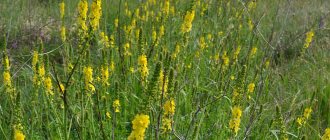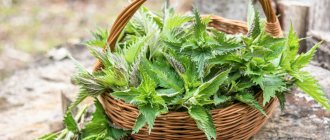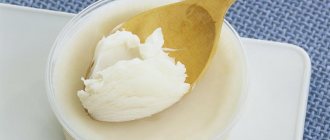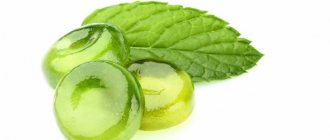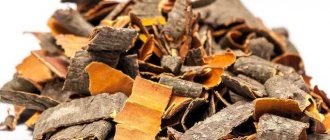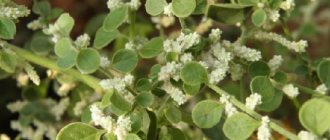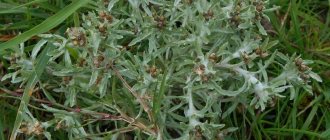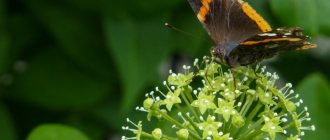This is a perennial herbaceous plant of the Crassulaceae family. Other names for Kalanchoe are bryophyllum, indoor ginseng, Goethe flower, tree of life, home healer, surgeon without a knife, etc. Some of its varieties grow well at home, delighting with beautiful flowers and providing healing assistance. The plant has a bacterial, anti-inflammatory, wound-healing and hemostatic effect. Its juice has a detrimental effect on polio and influenza viruses. Kalanchoe medicinal is successfully used in dentistry, surgery, gynecology, gastroenterology and dermatology.
About the plant
The genus Kalanchoe belongs to the Crassulaceae family, which includes more than 200 species of annual and perennial herbaceous plants. Most of them belong to succulents - plants that have special tissues for storing water and grow in dry areas. The most famous succulents include cactus and aloe.
Most species grow in tropical climates. They can be found in Africa, South America, Southeast Asia, and Australia. Some common home-grown species are native to Madagascar.
The genus name Kalanchoe is a French phonetic transcription of the Chinese "Kalan Chauhuy", which means "falling and growing" in Chinese. This name was given because of the reproduction characteristics of some plants. They are viviparous - daughter shoots are formed on the mother plant and, falling to the ground, immediately germinate, since they already have developed roots - this is clearly visible in the photo.
Kalanchoes can have a height from a few centimeters to 4 meters. Propagated by seeds, hatching buds or cuttings. It is grown as an indoor, decorative flower or medicinal plant.
Compound
Due to their rich chemical composition, some types of Kalanchoe are actively used for medicinal purposes. Healing flower contains:
- flavonoids;
- enzymes;
- vitamins;
- macro- and microelements;
- organic acids;
- essential oils;
- glycosides;
- tannins;
- lipid compounds.
The flower is used not only in alternative medicine. Currently, traditional medicine produces pharmacological agents from Kalanchoe and, at the same time, conducts active research to study the beneficial properties of the plant on human health.
Kalanchoe medicinal - photo
The most famous and familiar to us from childhood is Kalanchoe Degremon. Our grandmothers attributed miraculous healing properties to the leaves of this particular plant. They were not so far from the truth.
Kalanchoe Degremona
However, everyone knows that often only the dosage separates the medicine from the poison. It is curious that in some English-language sources this plant is described as extremely poisonous, dangerous for small children and animals. In regions where Kalanchoe Degremona grows in the wild, cases of cattle deaths have been observed right on the land where cattle graze. The death of the animals was caused by the properties of some types of Kalanchoe that affect the functioning of the heart muscle. The plant contains a steroid compound (cardiac glycosides) that can cause changes in the functioning of the heart. These drugs treat the heart, but in uncontrolled doses it is a deadly poison. Such compounds are present in different plants: lilies of the valley, foxglove, adonis, etc. The one that most corresponds to the title of medicinal plant, the one most studied by official science, is Kalanchoe pinnate.
Kalanchoe pinnate
In our country, the leaves and shoots of pinnate Kalanchoe are officially recognized as raw materials for the production of drugs sold in pharmacies since the late sixties. And in the reference book on the preparation of medicinal plants it is indicated as the only one allowed in medicine. In the island nation of Trinidad and Tobago, it is the official treatment for hypertension. Kalanchoe Blossfeld.
Little-known Kalanchoe Fedchenko
Kalanchoe Fedchenko
The power of the plant attracts medicine. Properties are being specified. So in Kyiv at NMU named after. A.A. Bogomolets at the Department of Microbiology, it was revealed that only Kalanchoe velutina,
Kalanchoe-velutina photo from Nikitsky Botanical Garden
the remaining types have little relation to the properties attributed to them.
There is such a joke. A woman, exhausted by her husband’s drunkenness, comes to her grandmother, a sorceress - a local healer. And he asks for a remedy that can stop her husband from drinking. The old witch gives the recipe: - Collect and pound 5 dry cockroaches in a mortar, at night from Thursday to Friday, always on the full moon, go to the cemetery, near the sixth grave on the edge - a thuja grows - take a pinch of earth from under the thuja on the eastern side, add into the cockroach flour, add dry sage and a little millet. Put all this in a linen bag and put it under the mattress at the head of your husband’s head. - So what will help? The woman asked hopefully. - It won't hurt! The witch answered with a sigh.
Kinds
More than 200 different species of Kalanchoe are known. Often they also include the closely related genus “Bryophyllum”, or “Bryophyllum”, consisting of 47 species. The most common ones for growing at home are:
- Kalanchoe blossfeldian - Blossfeld. Plant up to 30 cm high. Homeland - Madagascar. A little-studied species.
- Kalanchoe daigremontiana - Degremona. Also a Madagascan species, reaching half a meter in height.
- Kalanchoe pinnata - Kalanchoe pinnata. The most studied species. Can reach 2 m in height.
All of the above types of Kalanchoe are used for medicinal purposes. Kalanchoe Kalandiv, a miniature species often called a “flower bed in a pot,” is now increasingly popular as an ornamental plant.
Which ones are healthier?
Among the common types of Kalanchoe, traditional medicine has studied well and uses only two in medical practice:
- Degremona is a culture that appears more often than others in alternative medicine recipes. Traditional doctors also do not ignore this plant. As a result of their research, it was proven that the use of Kalanchoe Degremona extract has a positive effect in the treatment of breast cancer.
- Cirrus is the most studied species of Kalanchoe by science. In traditional medicine it is used to treat infections, inflammation, rheumatism. In some countries it is used to treat hypertension and urolithiasis. The juice of the plant is also used in surgery, dentistry and obstetrics as an anti-inflammatory and wound-healing agent.
It is difficult to say unequivocally which type of Kalanchoe is most useful. However, in medicinal practice it is recommended to use plants that are better studied by science, and these include only Kalanchoe “Cirrus” and “Degremona”.
Beneficial features
All the healing power of the plant is contained in its fleshy leaves. They contain the largest amount of useful substances, thanks to which the plant has the following healing properties:
- antiseptic;
- anti-inflammatory;
- wound healing;
- immunomodulatory;
- hemostatic;
- antiviral;
- hypotensive – lowering blood pressure;
- sedative;
- painkillers.
Also, the beneficial properties of Kalanchoe have found their application in detoxifying the body - removing toxins (the plant has a mild diuretic and choleretic effect).
What does it help with?
The plant is used to treat a number of diseases. It is recommended to use the plant for the treatment of the following pathologies:
- skin diseases: wounds, abrasions, burns, frostbite, polyps - polyposis, warts, ulcers, bedsores, trophic ulcers;
- oral diseases: stomatitis, bleeding gums, gingivitis, toothache and sore throat;
- colds: acute respiratory viral infections, acute respiratory infections, runny nose, cough, otitis media, rhinitis, sinusitis;
- joint diseases;
- blurred vision;
- varicose veins or varicose veins;
- hemorrhoids;
- gastrointestinal pathologies: peptic ulcer, stomach and intestinal disorders.
The plant can also be used in cosmetology to improve the condition of skin and hair.
Healing properties of preparations based on Kalanchoe
The use of preparations based on Kalanchoe helps with the following ailments and diseases:
- for gingivitis, stomatitis and periodontal disease, Kalanchoe juice is used in the form of inhalations - this reduces gum bleeding and improves the healing process;
- For nursing women with cracked nipples, it is recommended to apply ointment or an application of plant juice to the wounds;
- in gynecology, Kalanchoe preparations are used to treat erosions and tissue ruptures after childbirth;
- in surgery, in the treatment of bedsores, trophic and varicose ulcers, napkins soaked in Kalanchoe juice are used, which are applied to the wounds; for an analgesic effect, the juice is mixed with novocaine;
- ophthalmologists use Kalanchoe juice to treat various eye diseases - conjunctivitis, blepharitis, keratitis and various erosions; burns and eye injuries are often treated with preparations from Kalanchoe;
- the bactericidal properties of drugs are widely used for the prevention and treatment of various ENT diseases - sore throat, otitis media, sinusitis, ARVI, influenza and even tuberculosis;
- Dermatologists successfully use the medicinal properties of Kalanchoe in the treatment of various eczema, psoriasis, furunculosis, herpes, acne and some other skin diseases.
Kalahoe Degremona (Bryophyllum daigremontianum). ©GardenTags
Recipes
Alternative medicine knows many recipes for cooking from Kalanchoe. The plant can be consumed fresh, but can also be used to make medicinal products in the form of juice, tinctures and infusions.
Juicing
For preparation, it is recommended to first place the collected leaves in the refrigerator for one week to soften. This makes it easier to extract juice from plant materials.
After the leaves have become softer, they should be crushed in any convenient way: crush in a mortar, grind in a meat grinder. The juice is squeezed out from the resulting mixture using gauze. Store the finished product in the refrigerator for no more than 2 weeks. Therefore, it is not recommended to prepare the mixture in large quantities.
For long-term storage, the juice is mixed with medical alcohol:
- 1 part – alcohol;
- 5 parts – juice.
In this form, the juice can be stored for about a year without losing its beneficial properties. To maintain immunity and treat diseases of the gastrointestinal tract, it is recommended to take 1 tsp. product, during meals, three times a day. You can add honey to improve the taste. The course of treatment is 2 weeks, then you should take a break for the same period.
Vodka tincture
The use of Kalanchoe tincture with vodka has contraindications due to its alcohol content. However, it is one of the effective remedies recommended for treating acne and treating wounds. When treating wounds or ulcers, the product is applied to the affected area using a cotton swab.
Kalanchoe and its varieties. Their appearance
Botanical characteristics
Kalanchoe is a native of the hot tropics, is unpretentious and lives in the wild even on rocky slopes. It has taken root well in the Russian climate as an indoor medicine.
What Kalanchoe looks like: the plant belongs to the genus of succulent plants. Their height ranges from a couple of tens of centimeters to four meters, and among them there are vines and epiphytes. Kalanchoe leaves are opposite, alternate, simple, toothed, lobed, entire or pinnately incised. Blooms in the second year of life. The inflorescence is tripartite, has the appearance of a panicle. The flowers are large, red, white, pink, yellow, greenish or purple. Propagated by cuttings, seeds and buds. The stems and leaves of Kalanchoe are used for medicinal purposes. The plant is included in tinctures, creams, and ointments.
Varieties used
There are about 200 species and varieties of plants that grow in America, Africa, and Australia. Most of them are used as ornamental plants, but there are exceptions of Kalanchoe - species that have enormous healing power. Among them are:
Kalanchoe dissected or pinnate - has the greatest healing ability and is widely used in official medicine and the pharmaceutical industry in the production of medicines. It grows up to 2 meters in height, has tree-like fleshy stems with glossy round leaves, on the teeth of which buds develop, ensuring the reproduction of the plant. Kalanchoe blooms in the cold season, forming large panicles on the stalks.
Kalanchoe Blossfeld is recognized by official medicine and uses its medicinal properties in the production of medicines. This species reaches 30 cm in height, has numerous stems, ovate leaves with a red edge. It blooms all winter, forming inflorescences in the form of brushes of dark red, pink or orange color.
Degremona - this species uses its medicinal properties in traditional medicine recipes. The plant reaches half a meter in height, has oblong green leaves, along the edges of which children are formed that can separate and take root in the ground. It blooms in winter, producing bell-shaped inflorescences of pink or purple color.
Laciniata - received the name “deer horns” for its bizarre and original appearance. The flower has carved branched leaves resembling fleshy spines.
Serrata - originally from Menorca, has an unusual color - spotted underneath. The leaves along the edges form rosettes of children, giving the flower a unique decorative effect.
Chemical composition
The plant contains a large number of biologically active components:
- Tannins;
- Vitamins;
- Organic acids;
- Minerals (manganese, zinc, aluminum, iron, magnesium);
- Enzymes;
- Steroid substances (bufadienolides);
- Flavonoids;
- Polysaccharides;
- Ascorbic acid:
Bryophyllum - medicinal properties
The plant has a wide range of medicinal effects on the body:
- Activates redox processes and hematopoiesis;
- Has an antimicrobial and astringent effect;
- Stops bleeding;
- Cleanses and renews blood, restores the circulatory system;
- Stimulates metabolic and metabolic processes;
- Normalizes digestion;
- Prevents fermentation and rotting in the intestines;
- Helps absorb calcium;
- Cleanses the blood and body from radionuclides, waste and toxins;
- Relieves inflammation and eliminates pain;
- Strengthens the immune system and the body's defenses;
- Accelerates the process of cell regeneration and helps heal wounds;
- Lowers cholesterol levels;
- Stimulates the formation and excretion of bile;
- Relieves physical and mental fatigue, has a tonic effect;
- Prevents rapid aging and fading.
KALANCHOE
Application of Kalanchoe
Kalanchoe in folk medicine is taken internally and used externally to treat the following diseases:
- Colds, flu, ARVI;
- Stomatitis, gingivitis, periodontal disease;
- Conjunctivitis and otitis;
- Cough, runny nose, sore throat, tonsillitis, adenoid;
- Gastritis and ulcers;
- Varicose veins;
- Tuberculosis;
- Adenomas, prostatitis;
- Acne and pustular inflammation;
- Joint diseases;
- Erosion and mastitis;
- Psoriasis, eczema, skin ulcers, burns, cuts, bedsores;
- Hemorrhoids:
How to store
The most convenient way to store it is to keep the flower on the windowsill, picking off fresh leaves if necessary.
Freshly squeezed juice is stored in the refrigerator for a week in a glass container.
Self-prepared ointment can be stored for no more than a month, and a ready-made infusion can be stored for 24 hours.
The alcohol tincture retains its healing properties for up to three months.
Contraindications
Despite all the benefits of the flower, the use of Kalanchoe for medicinal purposes has limitations. If it is practically safe as an external agent, then ingestion can be harmful. It is not recommended to use the plant for:
- presence of allergies;
- pregnancy;
- breastfeeding;
- individual intolerance;
- hypotension – low blood pressure;
- chronic liver and kidney diseases.
Blooming Kalanchoe will not only disinfect the air in the room and create a cozy atmosphere in the house, but will also help cure many diseases. However, like any folk remedy, the advisability of its use should be discussed with your doctor.
